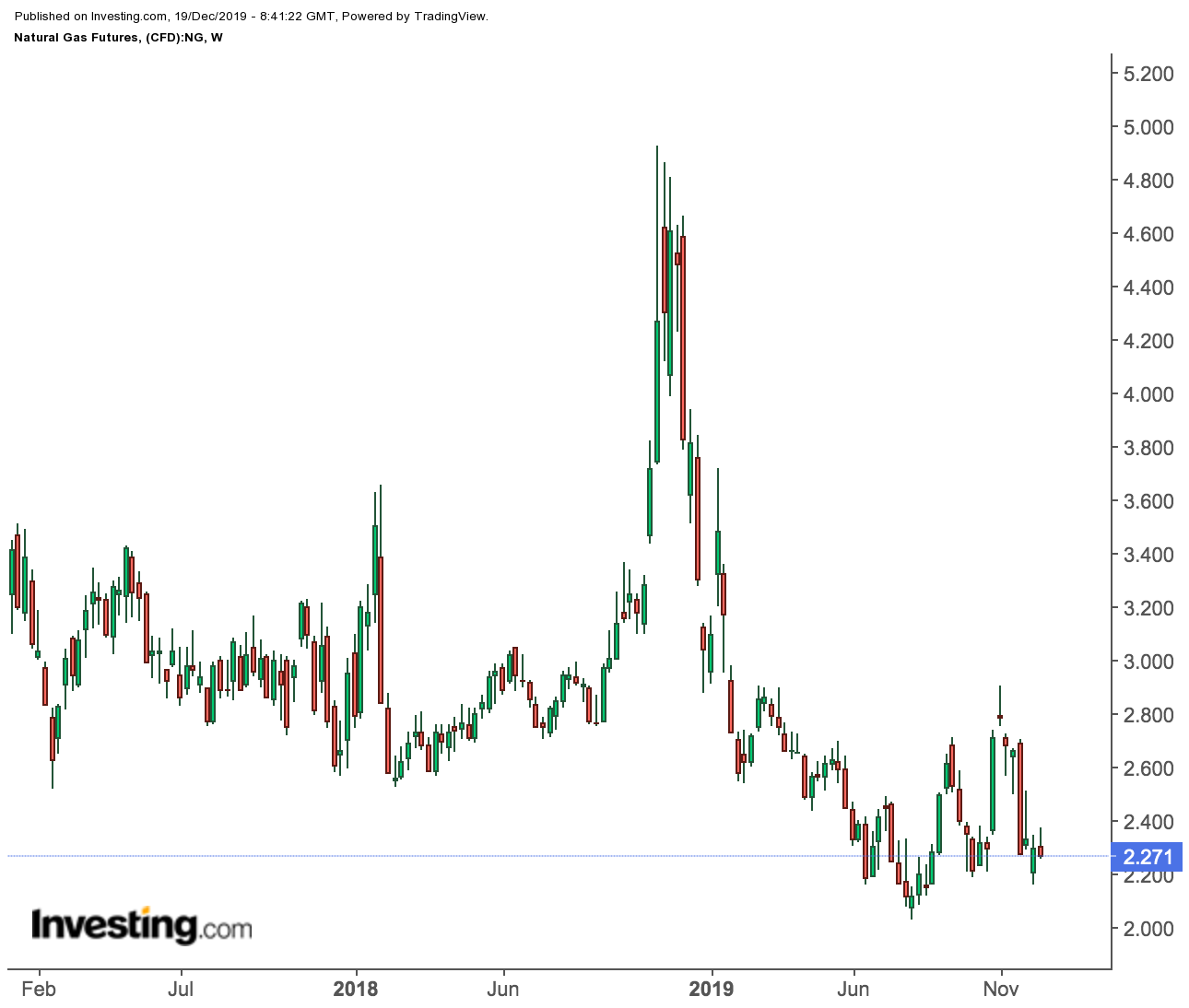What’s coming out of the ground isn’t likely to be as strong as what’s being “felt” on the ground — that seems to be the problem of natural gas bulls.
We’re talking about supplies of natural gas versus this week’s cold in the Northeastern United States and other gas-fired heating regions.
After some unseasonable warmth here and there, the weather once again had some freezing spots over the past few weeks. Yet, the cold generated wasn’t enough for utilities to burn too much stockpiles of gas from storage for heating, according to analysts reports.
Thus, when the U.S. Energy Information Administration reports its weekly natural gas storage numbers at 10:30 AM ET today, it is likely to cite a drawdown of 90 billion cubic feet (bcf) for the week ended Dec 13.
A Drawdown Still Lacking From A Year Ago
While the 90 bcf is certainly higher than the 73 bcf drawn during the previous week ended Dec. 6, it is way below the 132 bcf pulled from the ground a year ago. Even the average five-year (2014-2018) draw for this time of year is expected to be higher at 112 bcf, analysts’ reports show.
Hence, the weather once again becomes the bane of natural gas bulls even as it’s supposed to be the driver of higher prices, said Dan Myers, analyst at Gelber & Associates, a gas risk consultancy in Houston. Added Myers:
“Additionally, this week’s short-term burst of cold, which has pressured regional markets and given support to futures in recent days, is expected to ease after tomorrow.”
In sum, the weather last week was a little warmer than normal, with 162 heating degree days (HDDs) compared with the 30-year average of 177 HDDs for the period.
HDDs measure the number of degrees a day's average temperature is below 65 Fahrenheit (18 Celsius), and are used to estimate demand to heat homes and businesses.
Gas Prices Could Be Under More Pressure, Though Not Too Much
So, what impact could there be on gas prices from the likely underwhelming gas draw report?
Some more bearish pressure possibly, though maybe not too much.
As of Wednesday, the front-month natural gas contract on the New York Mercantile Exchange’s Henry Hub had given back more than it had gained in Monday’s recovery rally. The settlement of $2.28 per million British thermal units was, however, above the near two-month low of $2.22 hit on Dec. 10.
Scott Shelton, energy futures broker at ICAP in Durham, North Carolina said with this week’s cold out of the way, the weather was expected to be mixed, complicating the outlook once again.
Mixed Weather Could Wreak Havoc On Market Again
“Near to above normal temperatures are anticipated across most of the eastern half of the US for days 11-15. This warmth is most likely across the Southeast through the Ohio Valley,” Shelton said.
“The Northeast will not participate much in the warmth with seasonable values expected. To the west, below normal temperatures should occur. Some of the cold could reach the northern Plains later in the period. The anomalies shown are extreme,” he added.
Yet for gas bulls, there could be some relief in the coming year onward when production of the fuel could ease from record highs, said Myers, who expects a 1.5 billion cubic feet of decrease per day in output from late-November’s highs.
Production Cutback May Bring Bulls Some Boon In 2020
Gas production in the Lower 48 states averaged at 95.1 bcf per day last week, close to the daily record high of 96.3 bcf per day on Nov. 30. Said Myers:
“It is becoming a consensus view that this month’s decrease is the beginning of a trend that will extend into next year, as producers reduce drilling activity and focus on maintaining current production.”
But he also cautioned gas bulls not to be too excited by the prospects of a production ease, saying output was likely to come down gradually rather than crater:
“For its part, the decrease in production this month should reduce oversupply in upcoming storage withdrawals, although weak demand will still yield relatively meager pulls after the current cold passes.”
